On View: April 24 – June 30, 2017
Opening Reception with Kelly Sherman: Monday, May 8, 6-8pm
From spring to fall 2017, Cambridge Arts will present
Common Exchange, a unique suite of temporary public art projects, curated by Dina Deitsch, that will be installed, performed, and presented in response to the Cambridge Common, a historic civic space. As one of ten participating artists,
Kelly Sherman is creating a monument to personal memories. Sherman gathers narratives and transforms them into poetic banners that will be hung in the Common. Gallery 344 is one of several sites where Sherman will continue her process. Join us and contribute a memory to
We Were Here.
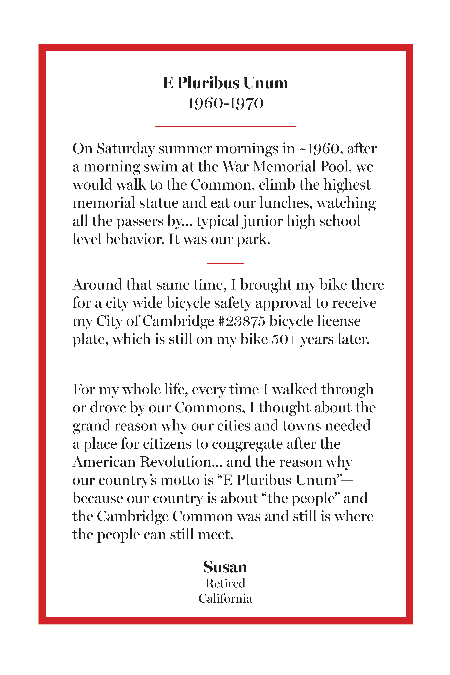
From spring to fall 2017, Cambridge Arts will present Common Exchange, a unique suite of temporary public art projects, curated by Dina Deitsch, that will be installed, performed, and presented in response to the Cambridge Common, a historic civic space. As one of ten participating artists, Kelly Sherman is creating a monument to personal memories. Sherman gathers narratives and transforms them into poetic banners that will be hung in the Common. Gallery 344 is one of several sites where Sherman will continue her process. Join us and contribute a memory to We Were Here.
Protected Trees- New Work by Joel Janowitz
January 23 - April 7, 2017
Cambridge Arts is pleased to share a new body of work by Joel Janowitz. Joel presents a poetic response to the intense street excavation and construction he has witnessed over the last several years in his Cambridge neighborhood, where the City has been conducting a sewer separation project that takes place underground but necessitates years of disturbance above ground. In the artist’s words: “I saw both the beauty and the irony of so many trees protected by dead wood and petrol-plastics. I began to paint this strange landscape which is revealing itself as an inviting and disturbing metaphor for our flawed relationship to the environment.” As an artist who has lived many years in Cambridge, Joel brings an unusual perspective to the complex activity that goes into engineering and sustaining our cities.
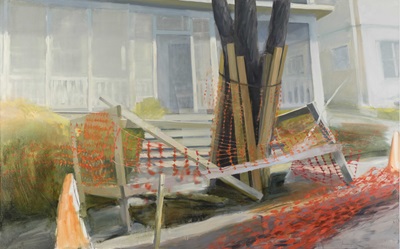
Screened, 2016, oil on linen, 60 by 96 inches, painting by Joel Janowitz
1440 Degree Landscape: Panoramic Photography by Richard Hackel
October 17 – December 30, 2016
Exhibit Reception: Monday, October 24, 6-8pm
Cambridge Arts invites you to view time-lapse panoramic photographs by Richard Hackel. After moving here from Michigan, where he was a medical ophthalmic photographer for twenty-nine years, Richard created work for Gallery 344 by spending eighteen months photographing selected public spaces in Cambridge as they changed through the seasons.
Always interested in what we cannot see as well as what we can, Richard creates views that are at once familiar and disorienting. While presented on a flat plane, the images are spatially circular – the photograph turns us around without moving our bodies. Offering a personal interpretation of his newly adopted city, Richard’s work collapses time and prompts a closer consideration of how we navigate and understand our environment through our senses.
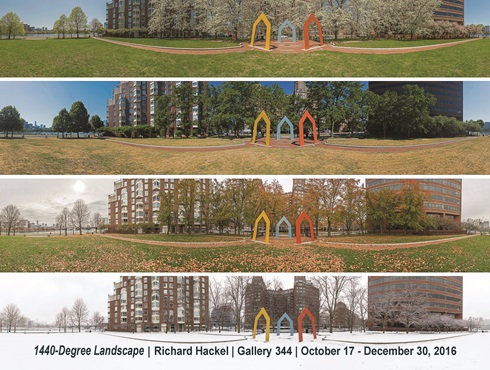
Cambridge Fire Department: A visual exhibition celebrating 184 years of service
August 15 – September 30, 2016
Exhibit Reception: Monday, August 29, 6-8pm
The exhibit explores the incredibly varied aspects of the past 184 years of service provided by the Cambridge Fire Department. The installation contains stories of famous fires, the evolution of the department, people, and equipment through text, photos, and an artistic display using materials found at the Fire Houses.
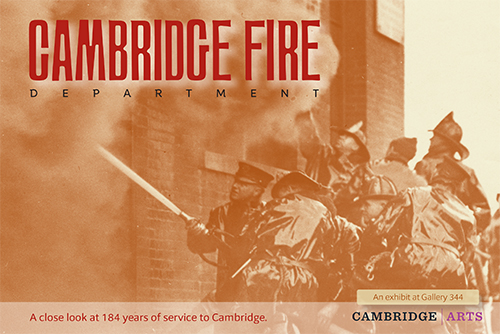
Lisa Houck: A Long Walk with No Destination
March 28 – July 1, 2016
Artist Reception: Monday, April 4, 6-8pm
In a constant stream of creativity and exploration, Houck energizes prints, mosaics, and ceramics with a distinctive and colorful visual language. Inspired by nature, folk art, and patterning, the artist blends the identifiable with the fantastical and the abstract, all unified by a strong sense of design and a deep understanding of color.
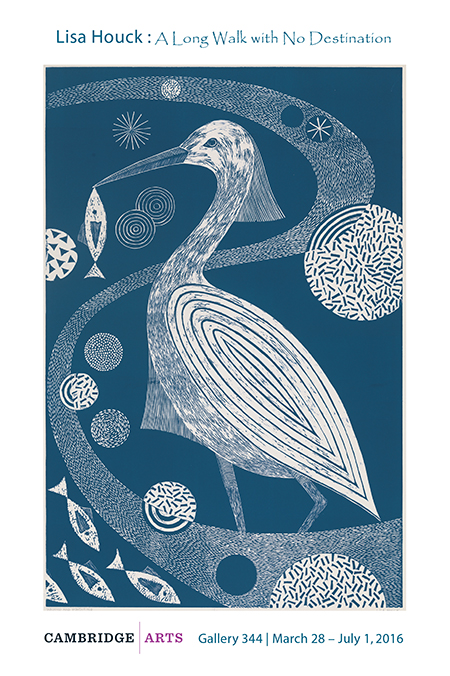
Vivian Beer
Refining Landscapes
November 23, 2015-February 29, 2016
Artist Reception: December 7, 6PM
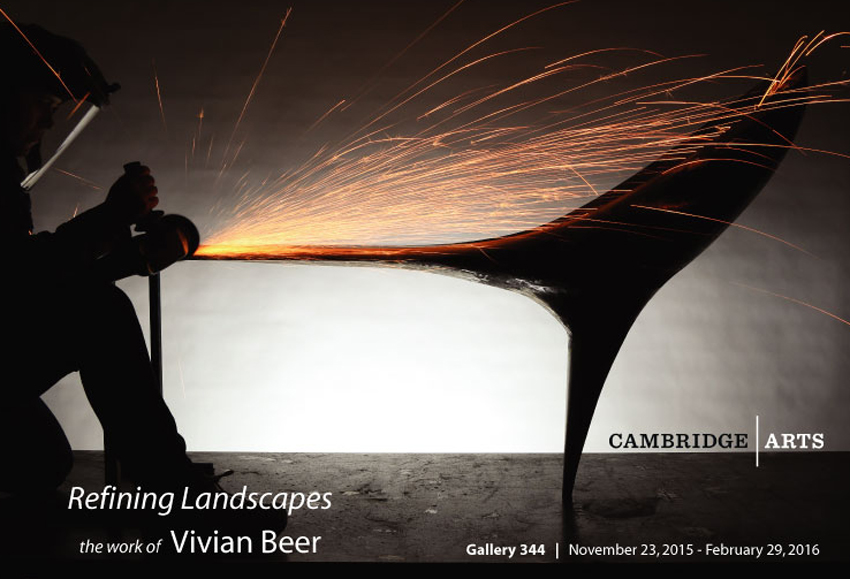
Vivian Beer is sculptor, furniture maker, and photographer. In 2012 she was commissioned by the City of Cambridge to create a public artwork for Nunes Park in Cambridgeport. EntitledThunderhead, it is a bench that becomes not-a-bench, bending itself into curves and loops that defy sitting.
Refining Landscapes lets the viewer in on the artist’s processes that the public rarely gets to glimpse, through drawings, photographs, videos, jigs, and models, alongside finished pieces. Vivian’s materials include steel, concrete, automotive paint systems, and bronze. Her practice reveals and synthesizes her interest in the forces of nature and industrial forms, a sophisticated knowledge of engineering and fabrication, and an exquisite sense of design.
From the landscape of the desert to the landscape of a chaise lounge, Vivian’s work jostles expectations and shows how a perfectly resolved sculptural form can ask questions.
Laura Evans
Conductivity
August 3 - October 30, 2015
Artist Reception: Monday, September 21, 6pm
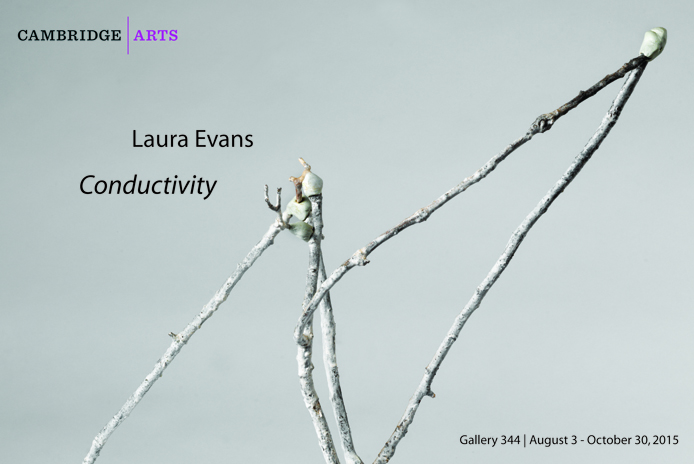
In 2008 Laura Evans created a pair of companion art benches for the Greene-Rose Heritage Park in the Area IV neighborhood (“The Port”). Entitled “Conductivity”, the sculpture is based on a typical park bench that the City usually selects from a catalogue but which has been altered by the artist. Cambridge Arts is pleased to present a selection of Laura’s studio work that sets “Conductivity” in the context of her ongoing artistic explorations.
Laura’s work often combines elements from the natural and the built environments, shaping materials that vary from the traditional to the throwaway. She is as attracted to the common cardboard tube or paper bag, with their physical, cultural, social, and historical attributes, as she is to a classic material such as paper or bronze, which have their own set of associations. Other materials Laura has employed include fabric, wood, Sculpey modeling material, plaster, wire, paper, paint, and found objects. Taking these materials in hand, she twists, squishes, knits, wraps, tears, joins, and bends, choosing low-tech methods and processes. In every case there is a reach into the possibilities of connecting literal, symbolic, and metaphorical approaches to forms and materials. What results can be both hard and soft, quiet and active, creepy and comforting, geometric and free-form, amusing and sad, strong and fragile.
The work presented in the exhibition represents a range of experiments and finished pieces over the course of the last decade, showing continuing themes and methods of working. We invite you to visit the Greene-Rose Heritage Park to experience “Conductivity” in person, and then to see its connection to Laura’s body of work installed at Gallery 344.
HOW CAN ARCHITECTS MAKE THE ARTS MORE VISIBLE?
It seems like it was decades ago that the arts were drastically reduced or removed from the curricula of elementary and high school programs around the country. Although many of our most creative cities find that innovation in the arts and sciences helps them develop vibrant communities, studio arts, theatre, music, and dance are still minimally represented in the hours that children and teens spend in school. Yet the arts remain unique as an experience for developing adaptive creativity and numerous important life skills as well as a medium for strengthening neighborhoods and cities.
Cambridge Arts, in collaboration with an upper-level architectural studio class at Boston Architectural College (BAC) led by David De Celis, is pleased to present this exhibition that demonstrates possibilities for how architecture can make the arts more visible, more relevant, and more accessible within our urban centers.
Central Square is a cultural district filled with venues, organizations, and individuals engaged in the arts. The built environment visible to citizens on the street could reveal this wealth more fully. The architectural students represented here have been given an apt site on which to envision a hypothetical school for the visual and performing arts.
In four stages, this exhibition will evolve over the course of three months. The BAC students will use Gallery 344 to show their process of exploring how strategic infusions of architecture, landscape architecture, and urban design can transform a community. We encourage you to visit throughout the process.
Magazine Beach - A place apart
Cambridge Arts and Cambridgeport Neighborhood Association present 'Magazine Beach - A Place Apart' November 3, 2015 - February 27, 2015 in Gallery 344.
Opening Reception - Monday, November 17, 6-8pm
From 1636 to the present... Examine the forces that shaped our 15-acre largest park and share your ideas for its future.
In 2015, landscape designs for Magazine Beach- Cambridge 2nd largest park - will be updated and its future cast. This exhibition looks closely at the history of the site from its being a wooded island on a tidal estuary to its current form. It examines the forces that have defined its uses - for gunpowder storage, a river bathing beach, a boathouse for rowers, a storm water sewage treatment plant, and a s a favorite swimming, soccer and picnicking destination.
"A Place Apart" offers a meditation on the past, present, and future of this dynamically changing place. We invite you to contribute to the conversation. What does Magazine Beach mean to you and what do you hope for its future?
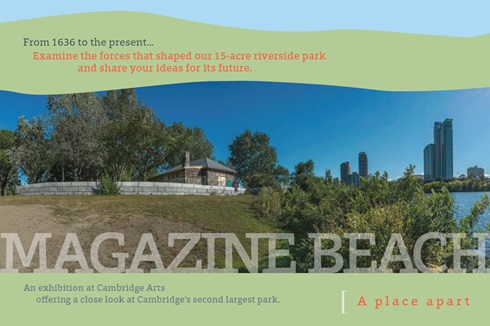
Magazine Beach Memory Party
Saturday, Jan. 31, 12-3pm
Do you have a memory of swimming or picnicking or just hanging out in the part?
Share it over lunch with us.
Dessert Café
Monday, Feb. 9, 6-8pm
With remarks by Charles Sullivan of the Cambridge Historical Commissio0n and Renata von Tscharner of the Charles River Conservancy. Co-hosted by Cambridge Arts, the Cambridgeport Neighborhood Assn., Cambridge Historical Society, Cambridge Historical Commission, Charles River Conservancy, and the Riverside Boat Club.
Community Potluck
Monday, Feb. 23, 6-8pm
With Bluegrass by Best Ever Chicken. All are welcome. Bring a dish to share.
Let the Public Play

Play is fundamental to human development. Difficult to define but universally experienced, free play appears to have no function and yet has persisted throughout evolution. It can be observed in an infinite variety of forms, sometimes with intricate rules, sometimes with no rules at all – a “behavioral kaleidoscope”. It can be solitary or social. At its best, it is imaginative, generated from the “player”, improvisational, challenging, open-ended, and multi-sensory. Play is an activity where we learn and think with our bodies as well as our brains.

Above: Opening Reception
While the desire to engage in playful activity persists throughout life, we tend to think it should be abandoned upon exiting childhood. Our built environment reflects this view, evidenced by “playgrounds” confined to fenced-in areas in parks – where play is supposed to take place. If play nurtures cognitive, sensory, and social development and contributes to our well-being, then creating more playful public spaces also nurtures stronger communities, and our cities should physically and visibly reflect these facts.
Let the Public Play is a three-part project offering experiences of playfulness in daily life.
1) An interactive exhibition in Gallery 344.


2) Playful sculptures by Adam Simha & Skylar Tibbits for outdoor installation.

3) An interactive deck of cards designed by Rick Rawlins. All together, these three components present activities indoors and outdoors as well as in a range of scale from small to large. Let the Public Play is an invitation to take play seriously, to be inspired, to remember the critical value of play throughout our lives, and to envision along with us a more playful city.

In 2007, the City of Cambridge formed the Healthy Parks and Playgrounds Task Force to determine goals and write recommendations for designing and building public spaces that incorporate, to a greater degree, the principles of healthy play for all ages and abilities. The resulting report in 2009 was followed by a citizen advisory committee that met to discuss ways to bring the mission of the Task Force to the wider public. The work of the Task Force is meant to be continued by all who design, construct, manage, maintain, and use our City.
Nancy Simonds - Reverie in Color and Shape
July 22 - September 27, 2013
 Al-Mutanabbi Street Starts Here
A three-part Exhibition of Artist Books and Broadsides
Al-Mutanabbi Street Starts Here
A three-part Exhibition of Artist Books and Broadsides
January 7 - July 21, 2013
Round: Cambridge by Halsey Burgund
October 1 through November 23, 2012

MOVE ME: A Public Art Project
Roberta Paul and Beth Kantrowitz/bkprojects
April 2-June 15, 2012

SPUN – Artist-Designed Bike Racks
February 1 – March 9, 2012

Rosalind Murray: Lateral Canal Ahead
October 11 - December 13, 2011

Breathe Cambridge: Gately Youth Center
June 20 to September 12, 2011

Brian Kane: Free Wifi
March 14 - May 13, 2011

Drawing in Public
December 6, 2010 - February 18, 2011

Of, By, and For: Work by Daniel Peltz and Paul Notzold
September 7 – November 19, 2010

Remediate/Re-vision: Artists Engaging the Environment
July 15 - August 20, 2010

Cambridge Street Project: An inside look at the process of public art
April 1 - June 11, 2010

100 from Cambridge: A Preview Exhibition for Cambridge Open Studios
January 25 - March 12, 2010
.jpg)
Breaking Ground: The past, present, and future of the
Maud Morgan Visual Art Center
September 28 - December 18, 2009

Sound Off: Public Art Youth Council
August 3- September, 2009

Children of Arcadia
April 24 - May 15, 2009

ArtForce
March 10 - April 17, 2009

Michael Oatman: You are Here
June 1 - July 15, 2009

Gail Boyajian: Peaceable Kingdom
April 24 - May 15, 2009

Mela Lyman: Anxiety of Beauty
February 25, 2008 - Jan 5, 2009

Nancy Selvage
November 19, 2007 - February 8, 2008

Heidi Whitman: Brain Terrain
September 24 - November 9, 2007

Public Art Youth Council: "What is Public Art to Us?"
July 30 - September 14, 2007

Ready, Set, Bloom
May 14 - July 20, 2007

Material Choice: Science, Conservation & Public Art
April 9 - May 4, 2007

Fragments
February 1 - March 30, 2007

C'mon In, The Water's Fine
September 7 - November 2, 2006

Works in Architectural Space
June 5 - August 18, 2006

Of(f) the Table- everything must go
April 18 - May 26, 2006

Model Citizens: 42° 22’ 12.11” N, 71° 06’ 11.45”
February 27 - April 7, 2006

Dimensions Variable; Site Fixed
November 3 - December 28, 2005

Rose-Tinted
September 22 - October 27, 2005

Open
August 4 - September 9, 2005

Filament/Firmament
May 5 - June 30, 2005

Walking Central Square
March 17 - April 22, 2005

Reaching Water
December 2, 2004 - February 2, 2005

Pamplona Inside
January 9 - February 17, 2006

Randall Thurston: Night Garden
November 16, 2006 - January 19, 2007

Self-Sufficient
September 16 - November 18, 2004

Walls of Heritage, Walls of Pride
May 5 - June 30, 2004

Mike Glier: Backyard
February 23 - April 30, 2004
